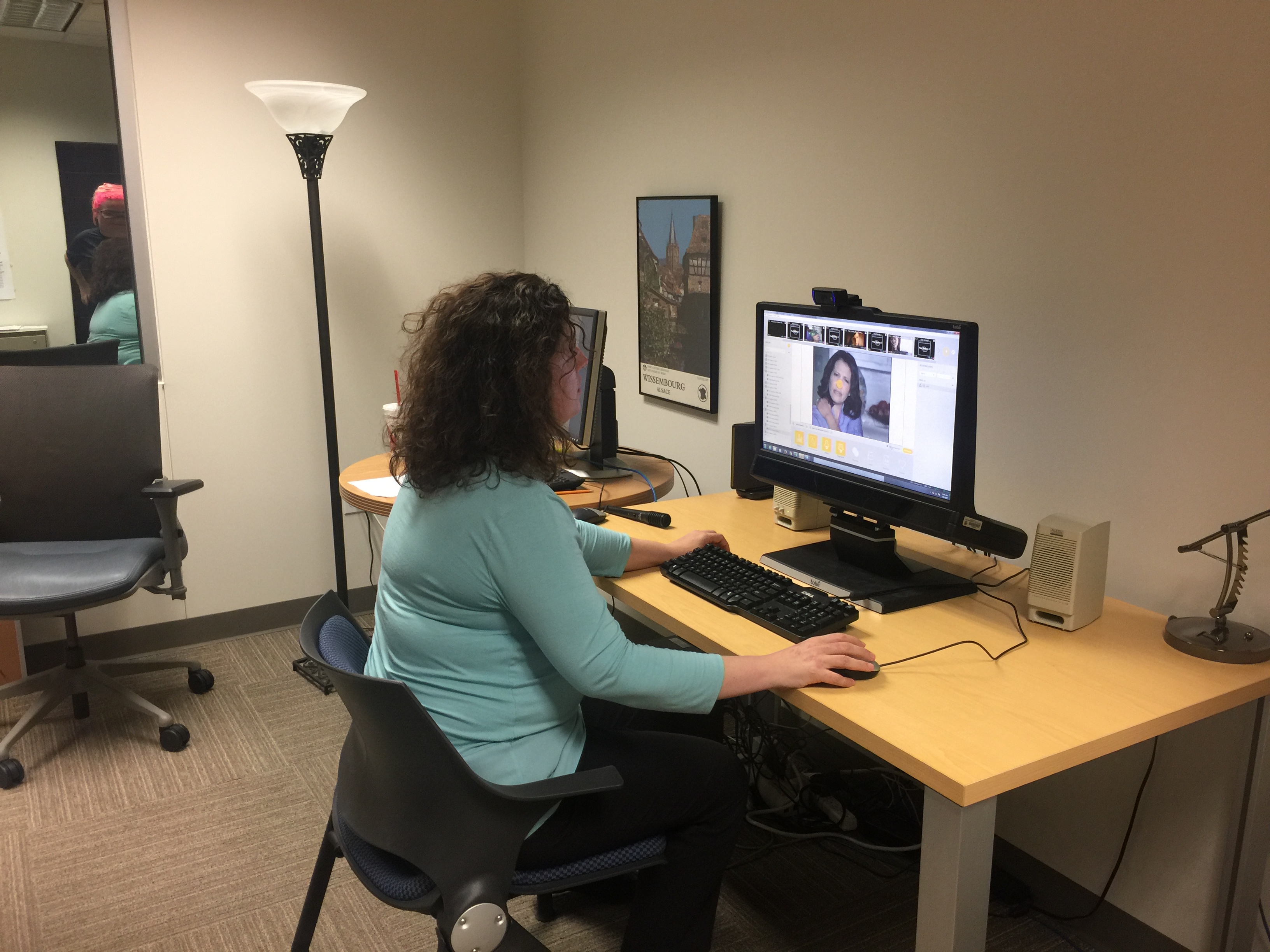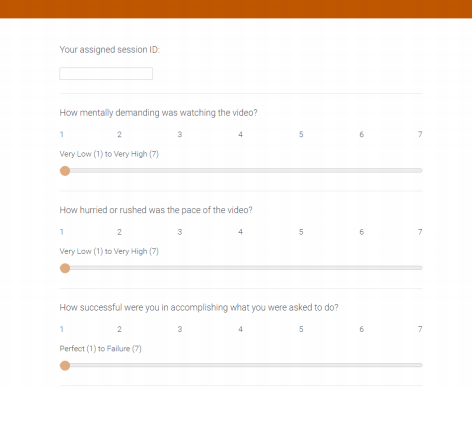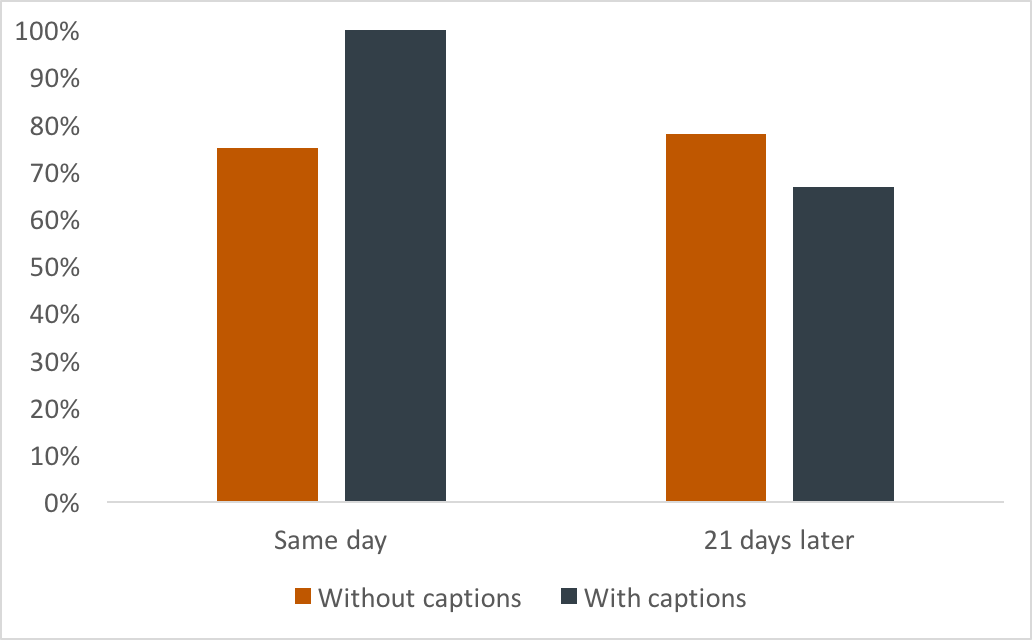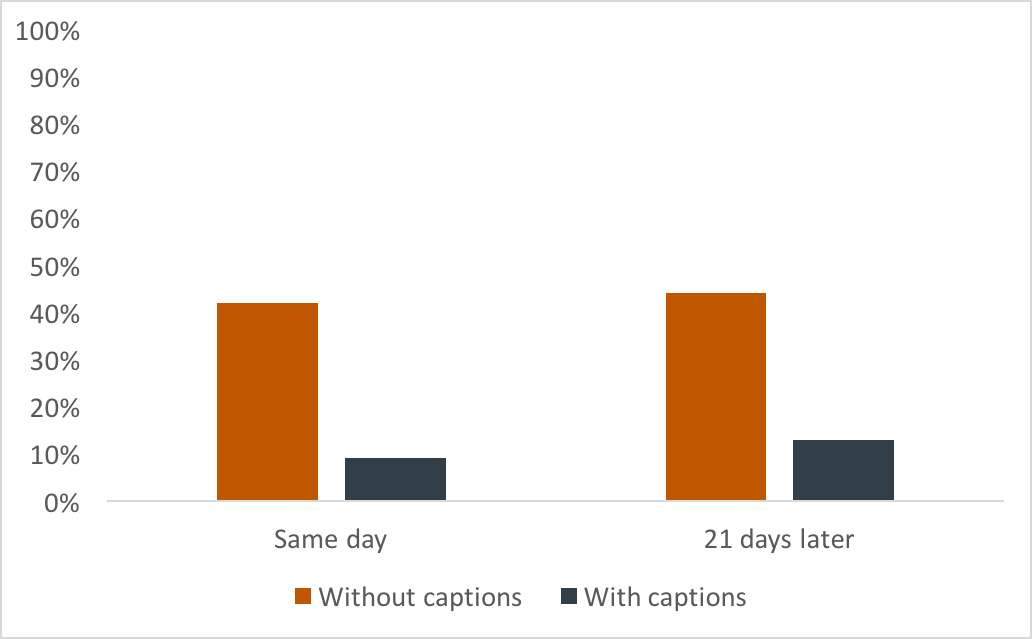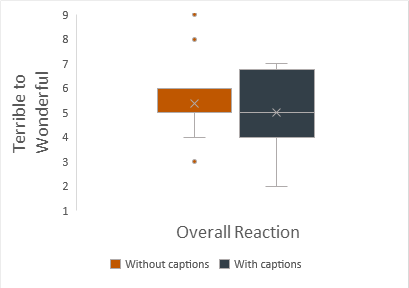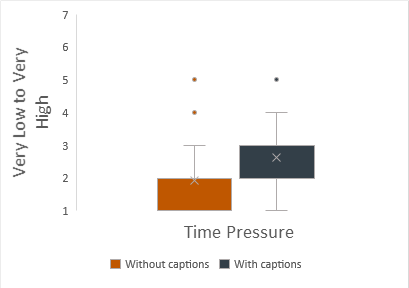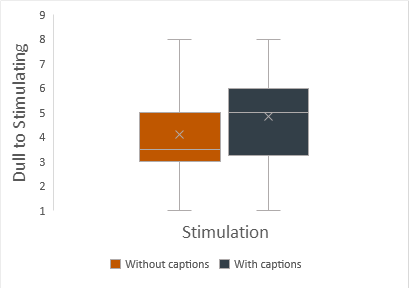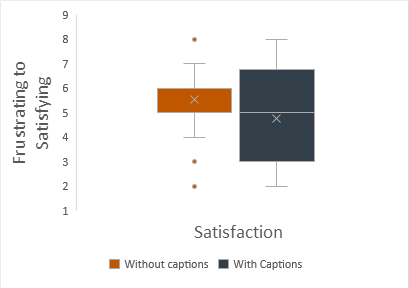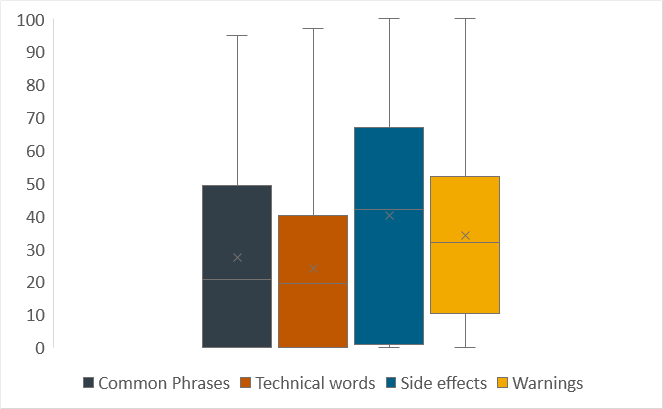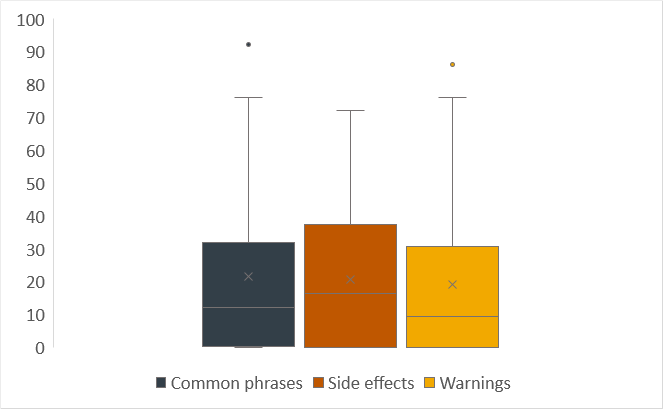Jacek Gwizdka
jacekg@ischool.utexas.edu
Caroline O’Meara
caroline.omeara@utexas.edu
Han Han
han_han@utexas.edu
Whitney Pittard
whp10a@acu.edu
INTRODUCTION
Closed captions are frequently included in videos, including commercials. This project combines eye-tracking technology and survey research to study how captions might affect viewers’ attention and affect their experience of watching commercials. The study focuses on medical commercials where viewers are exposed to the technical content. The subjects watched commercials with and without captions. We evaluated their attention with eye-tracking equipment and their retention and experience with questionnaires. Studying attention, retention, and experience in commercials is important for analyzing the value of a brand’s advertisement when reaching a target market. Since commercials are expensive and time-consuming for a brand to develop and launch, an advertisement should be compelling and effective.
RESEARCH QUESTIONS
RQ1
Do subtitles effect audience attention with pharmaceutical commercials containing technical content?
RQ2
Can captions help viewers understand technical content in commercials when compared to viewers’ understanding after watching a commercial without captions?
RQ3
Do captions help viewers remember technical information when compared to how much viewers’ remember after watching a commercial without captions?
RQ4
Do captions effect the experience of watching commercials with technical content?
METHODOLOGY
Eye-tracking using Tobii 300 eye-tracker and iMotions Attention Tool software
Qualtrics questionnaires after each video and an additional one at the end of the session
Qualtrics questionnaires three weeks later using join.me or in-person screen sharing
Participants
12 adults
9 participated in follow-up
Average age of 28
7 women and 5 men
Most with a four-year degree
Procedure
IRB approval
Within-subject design
Simple randomization
Qualtrics questionnaires
Remote screen-sharing

Participants overall impressions of the commercials at the end of the session.



